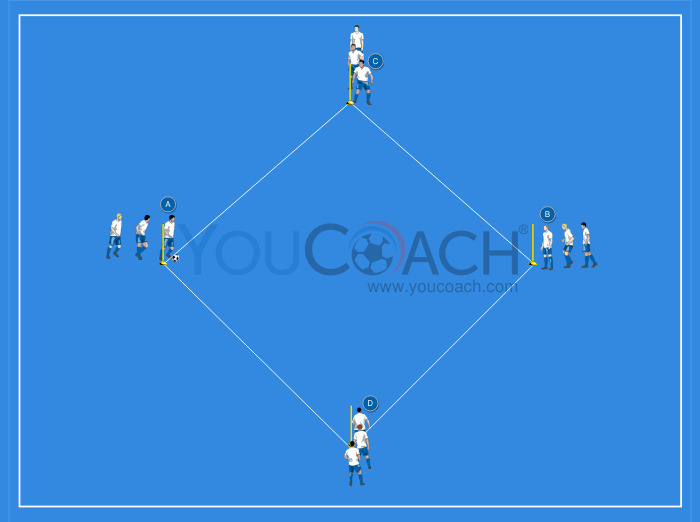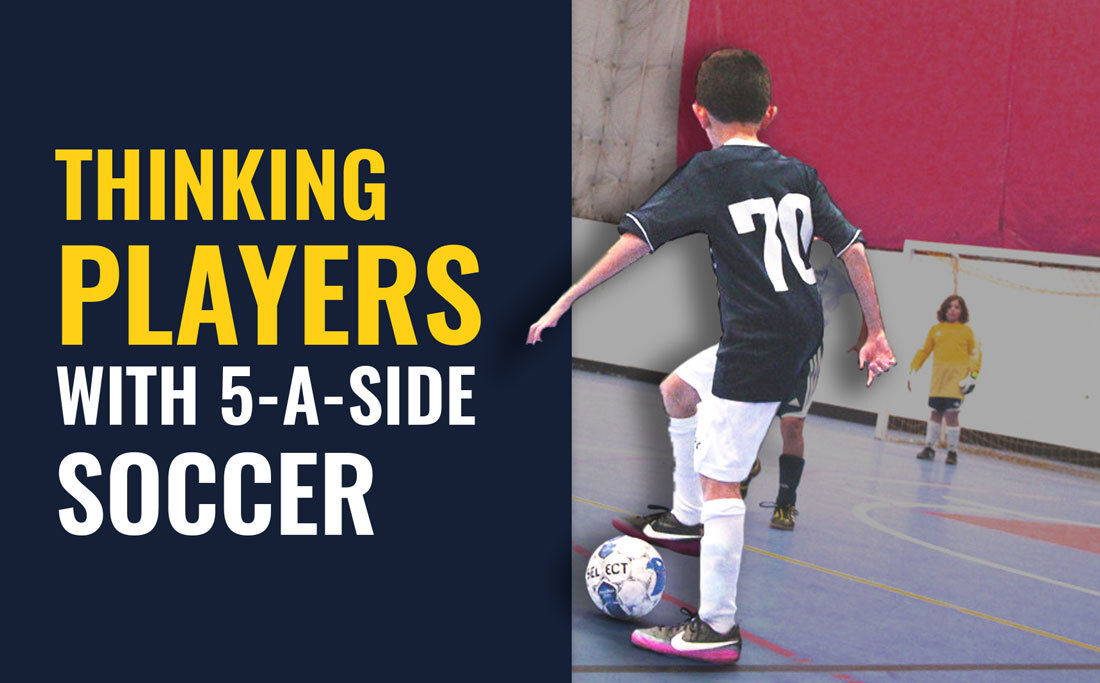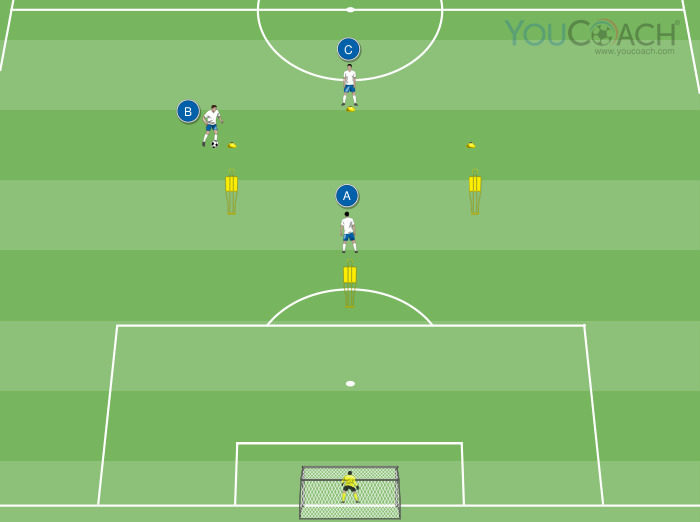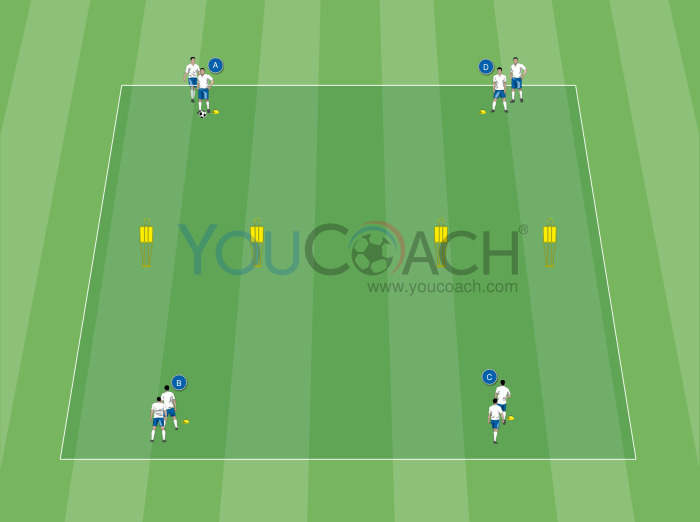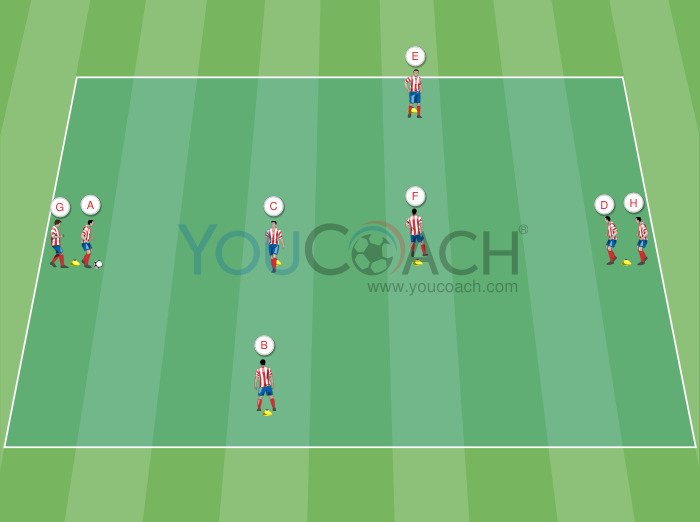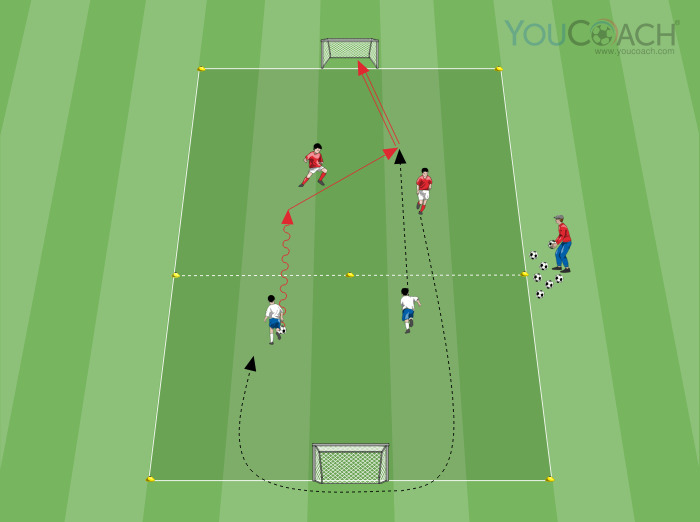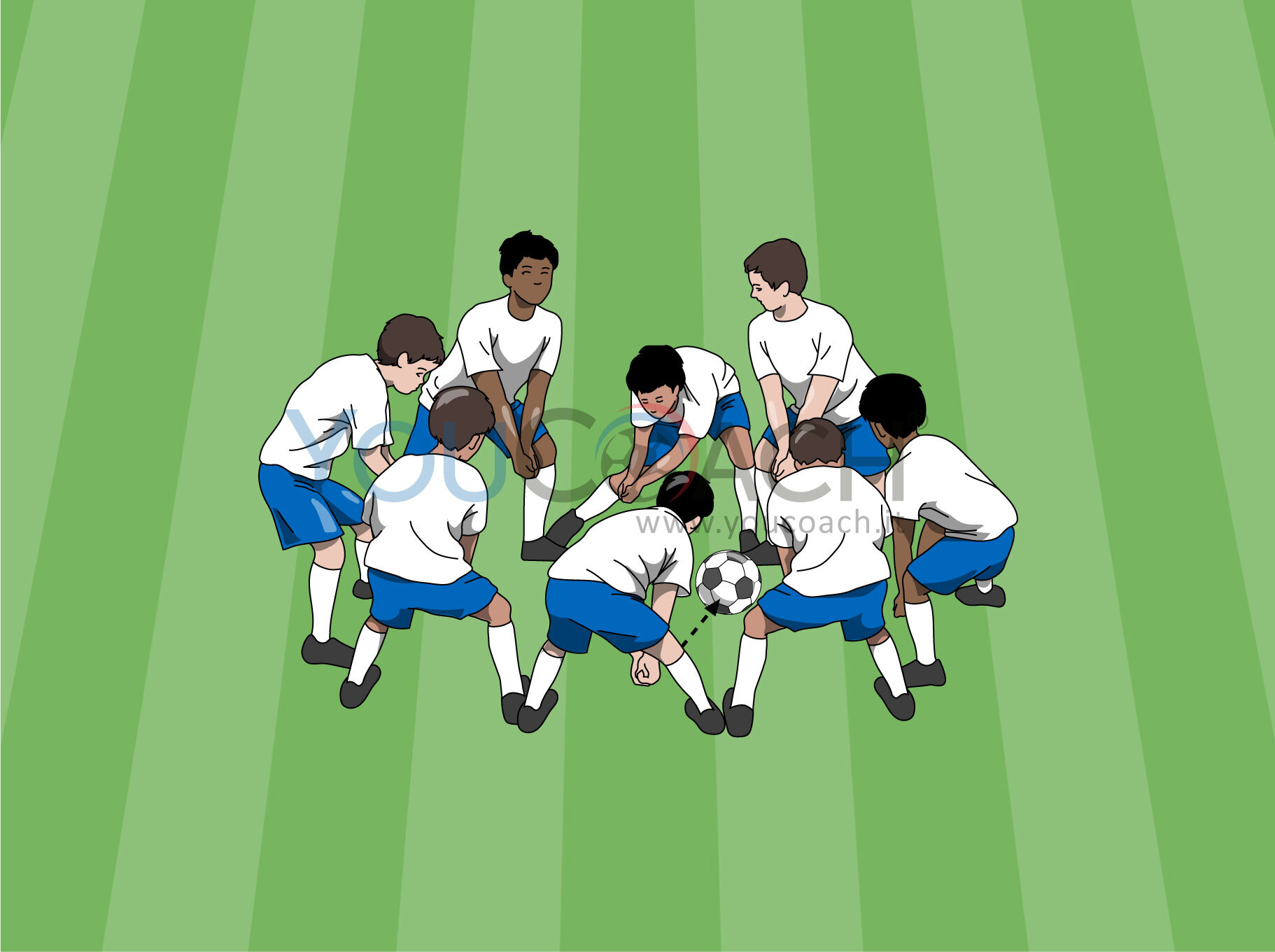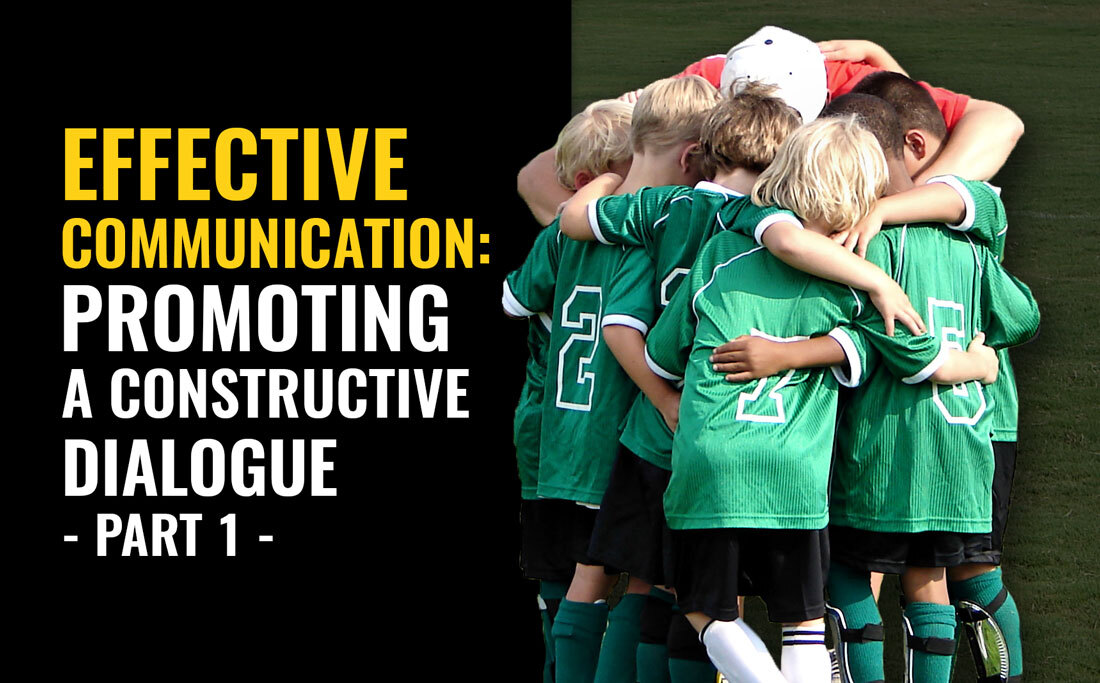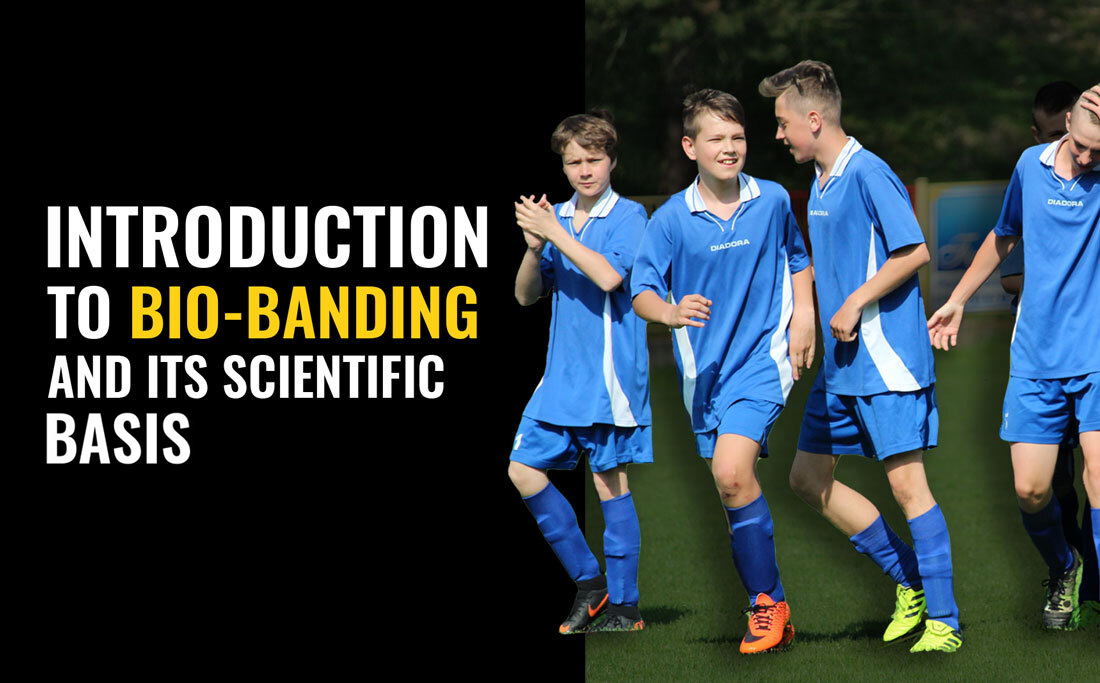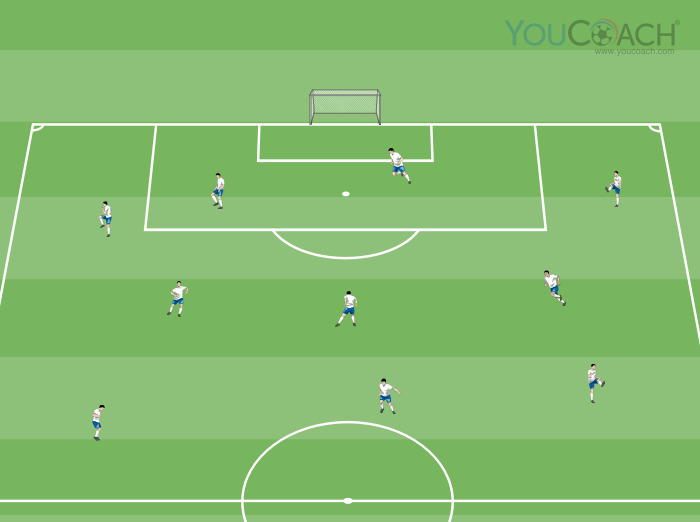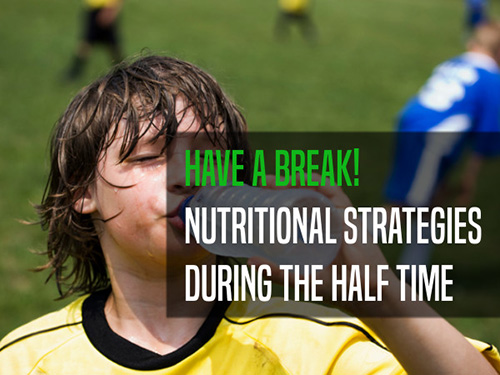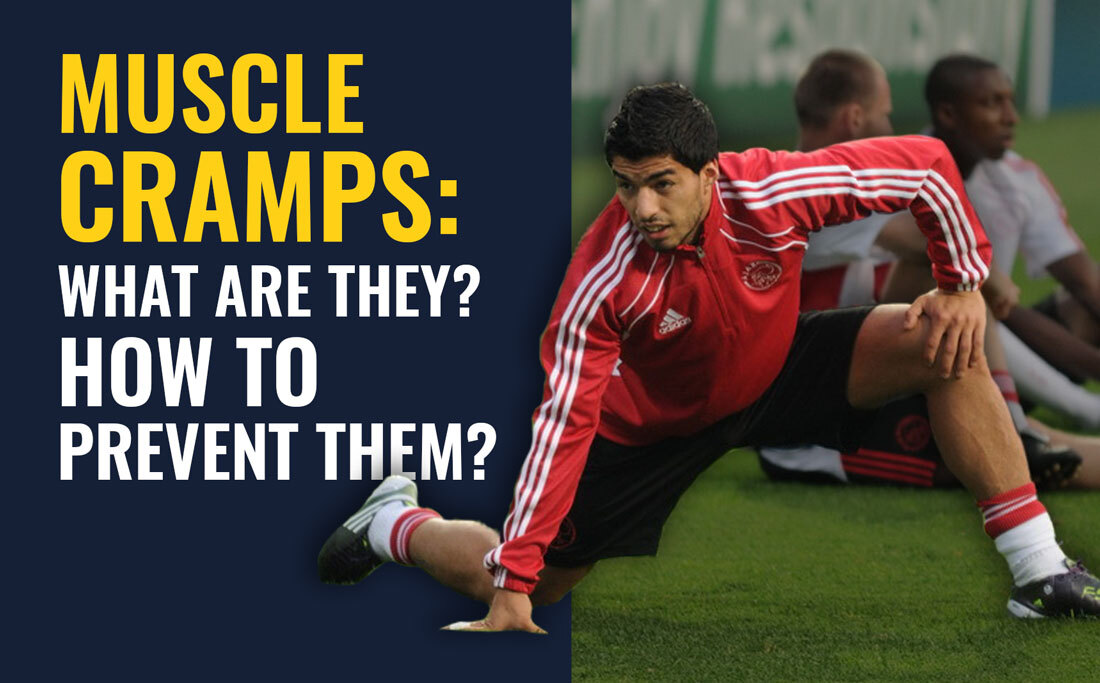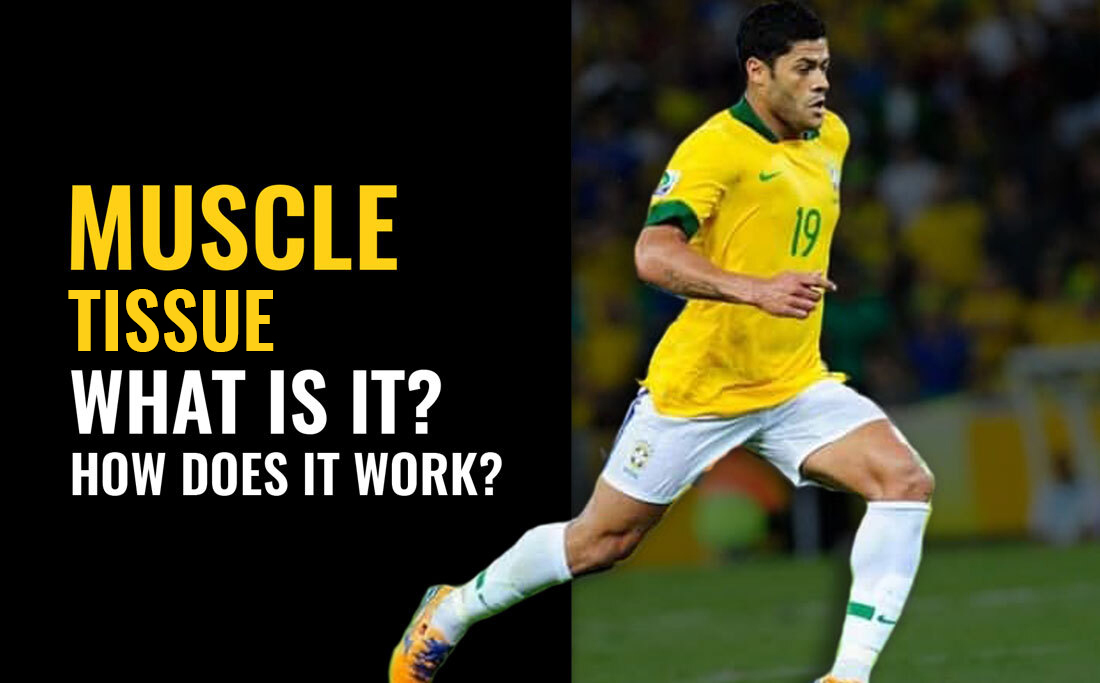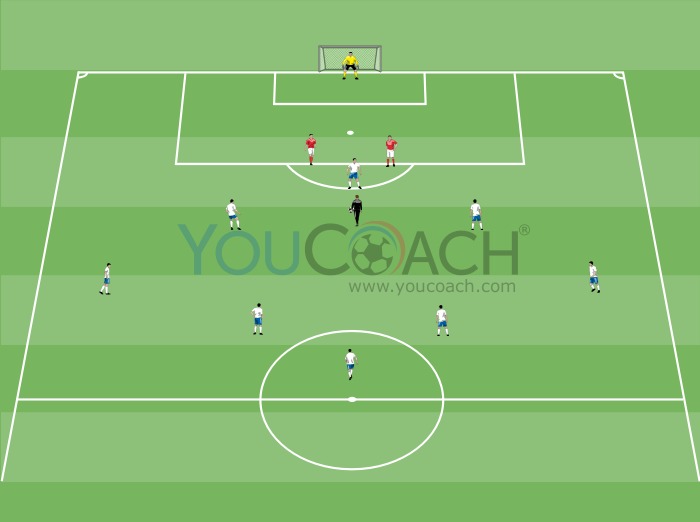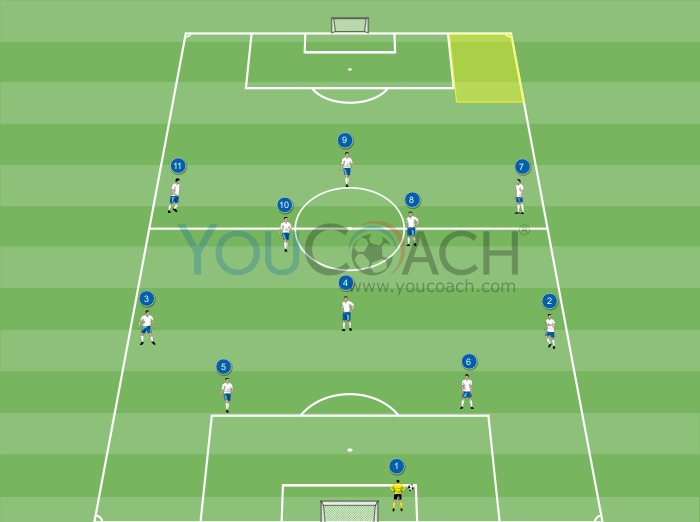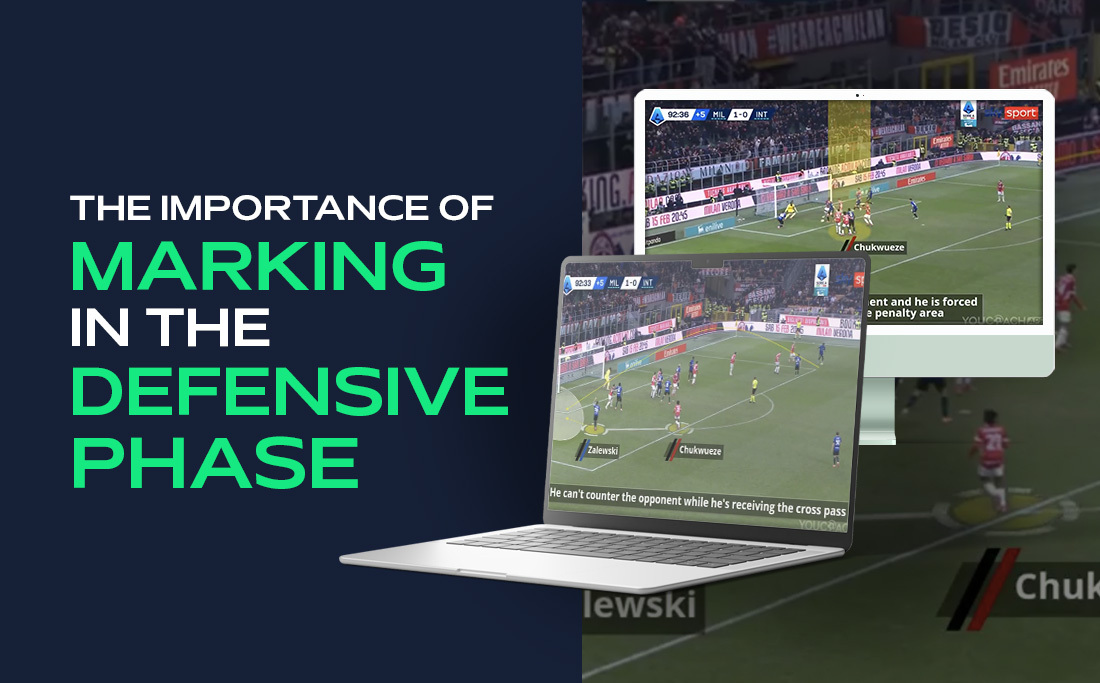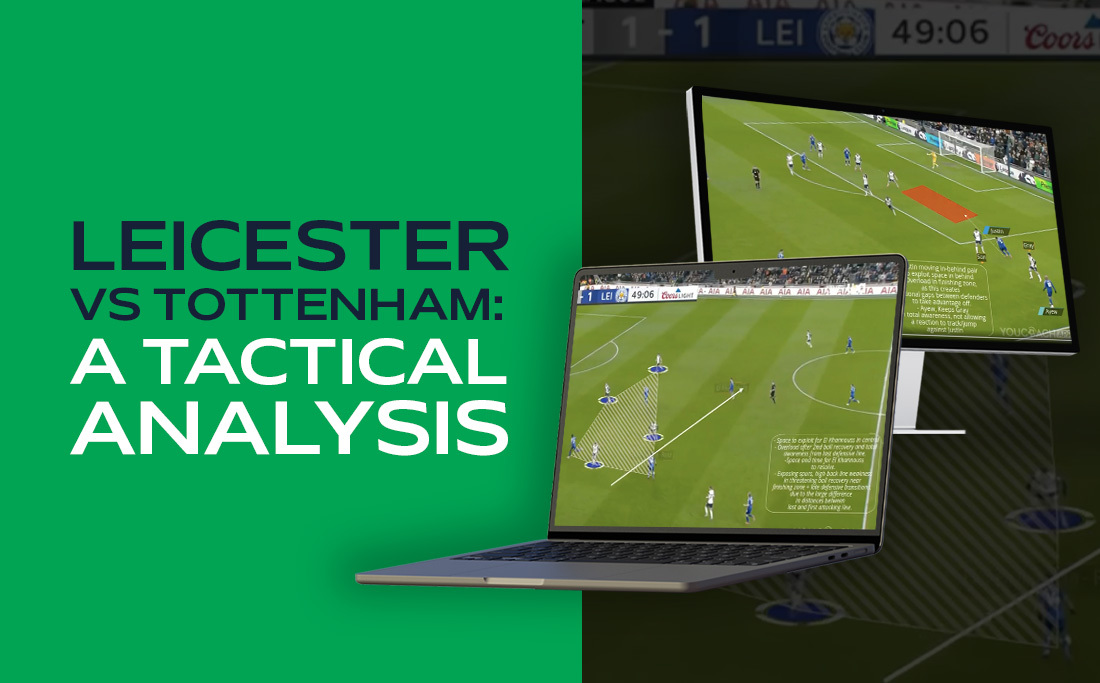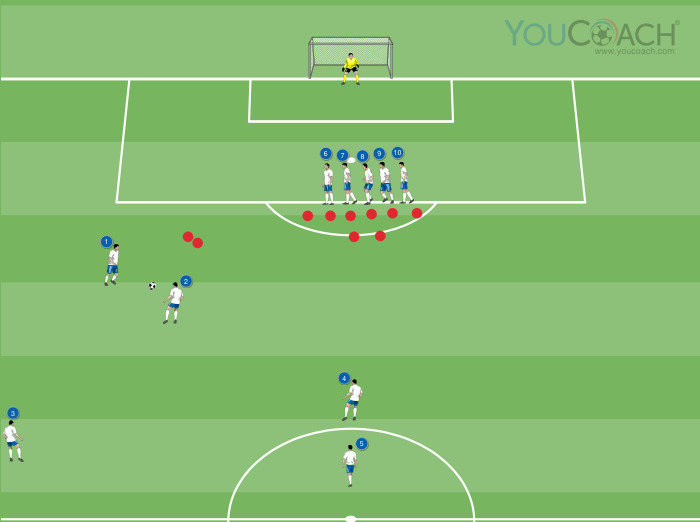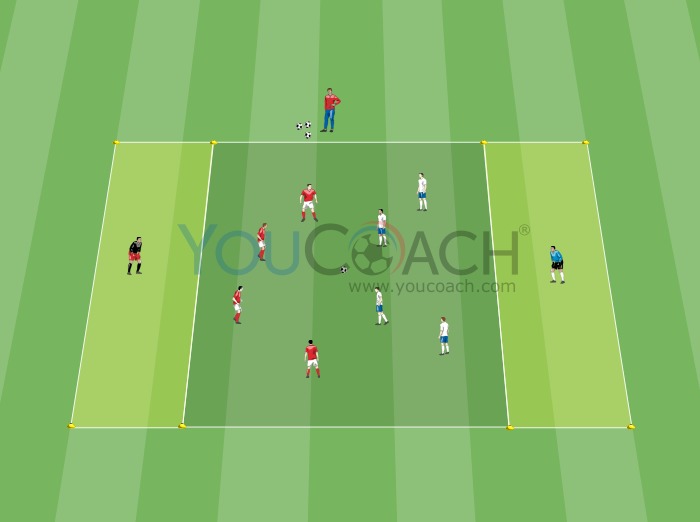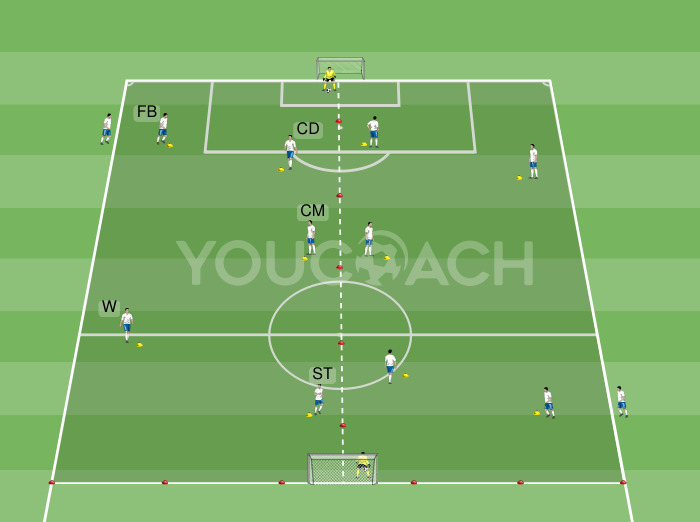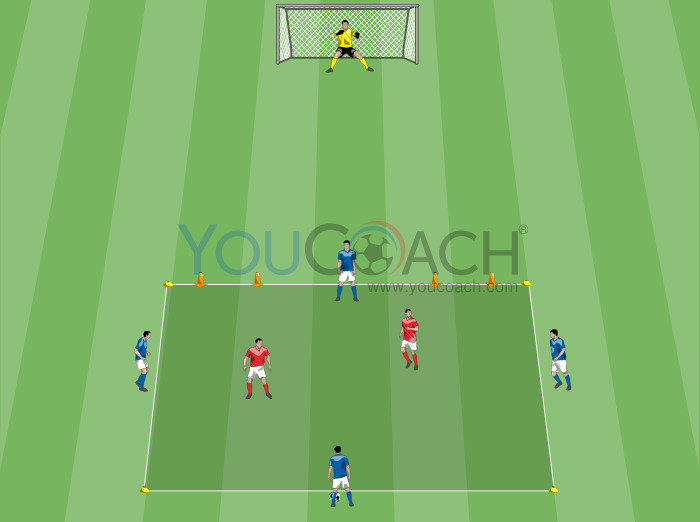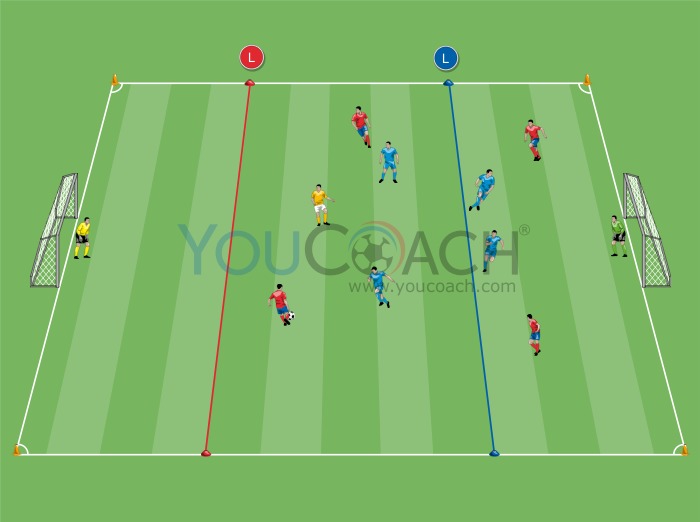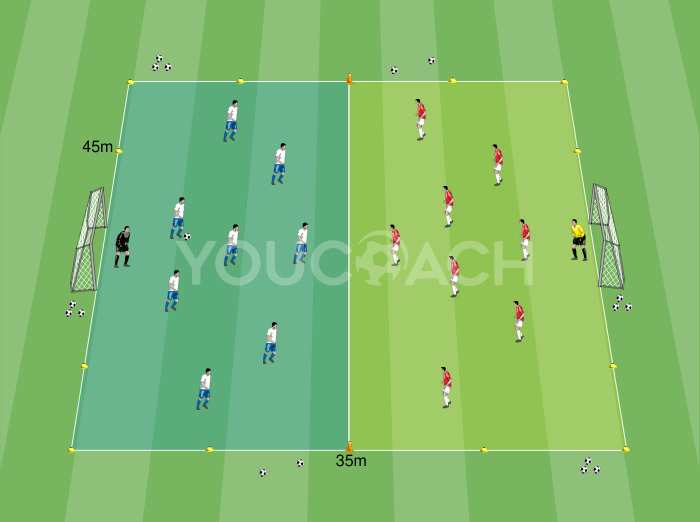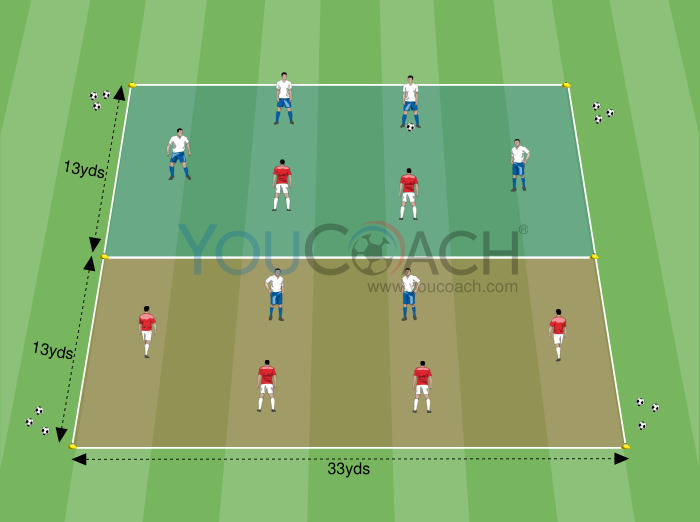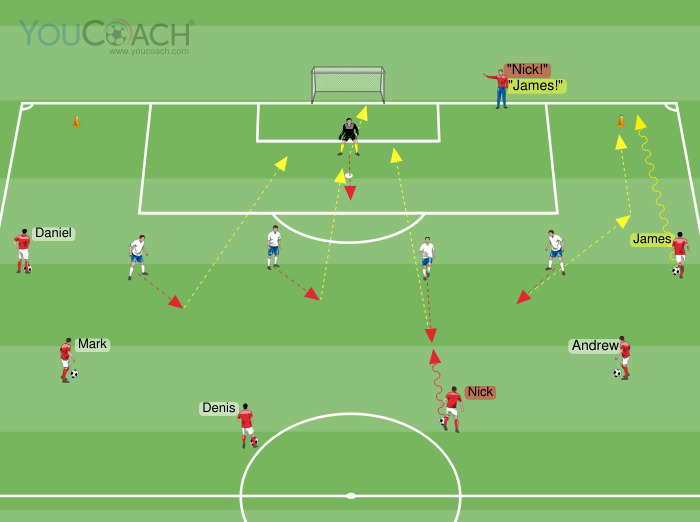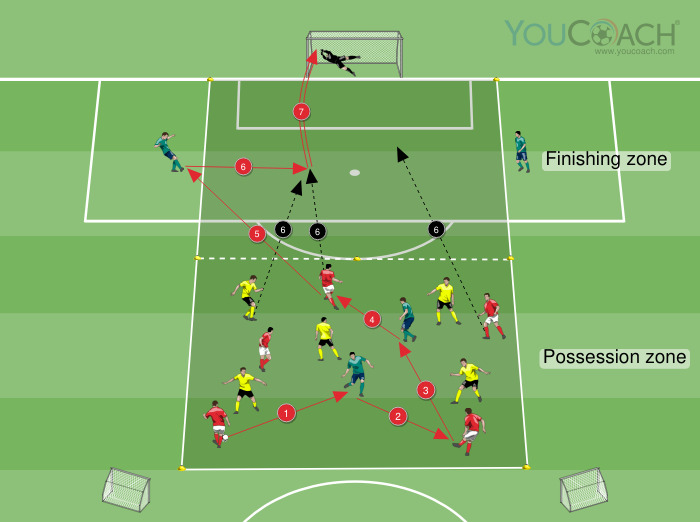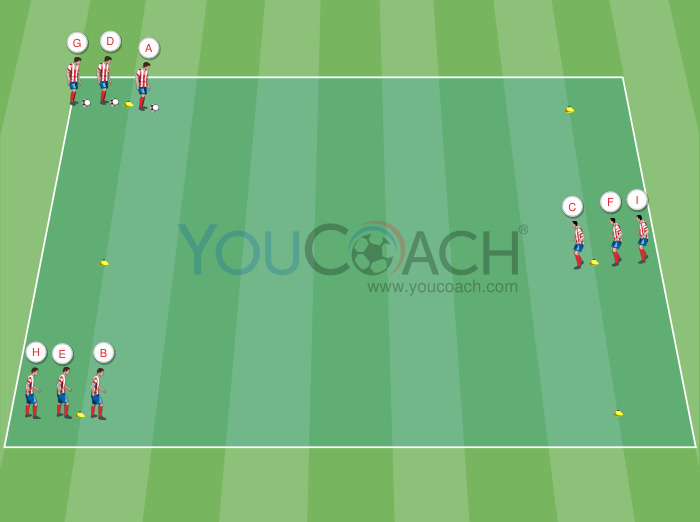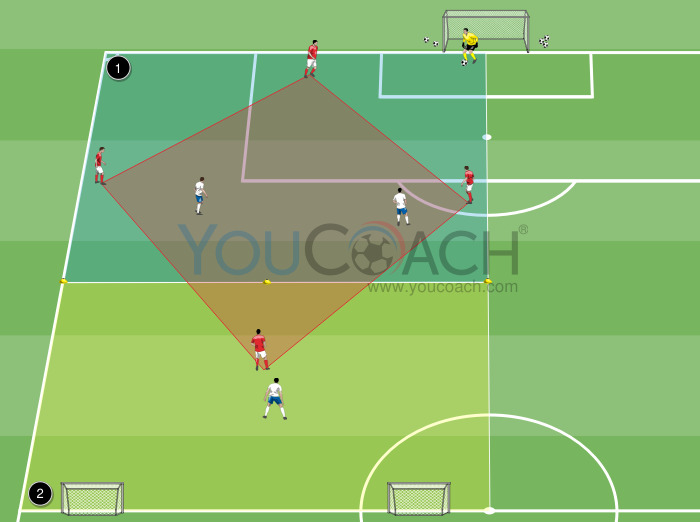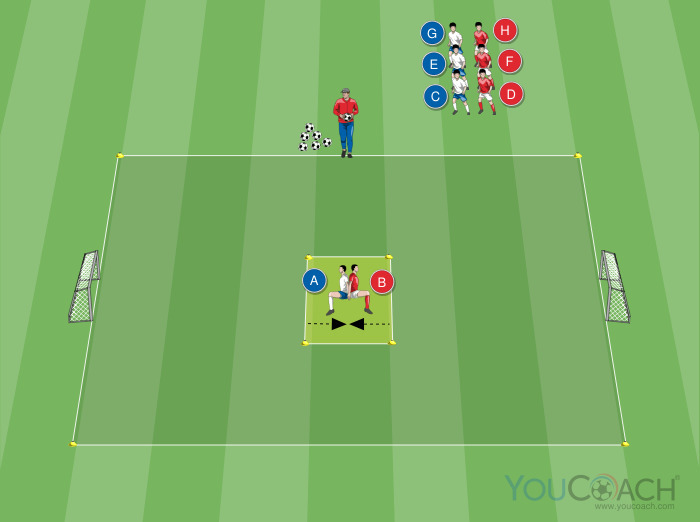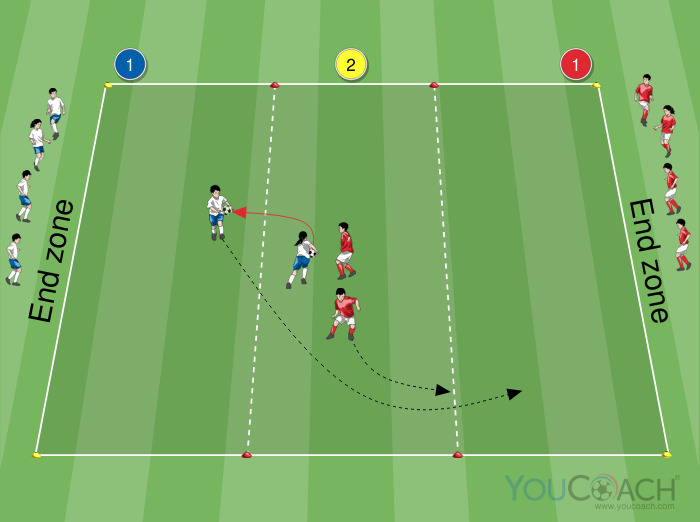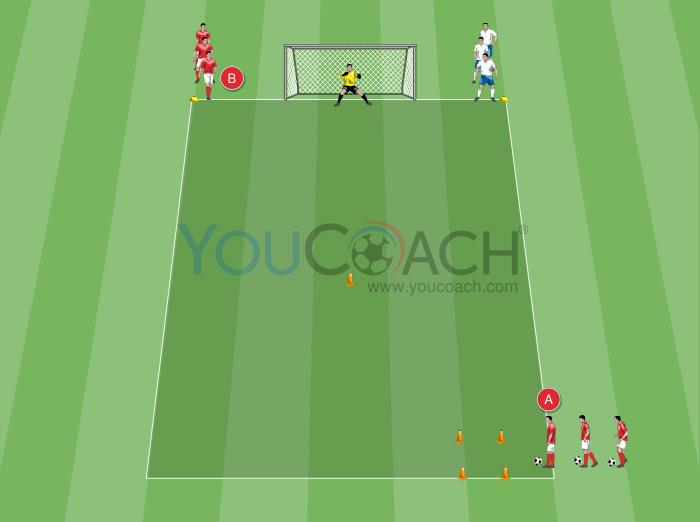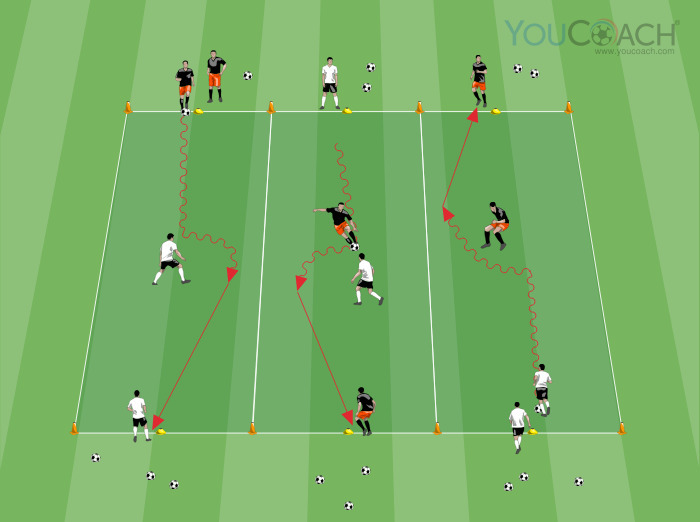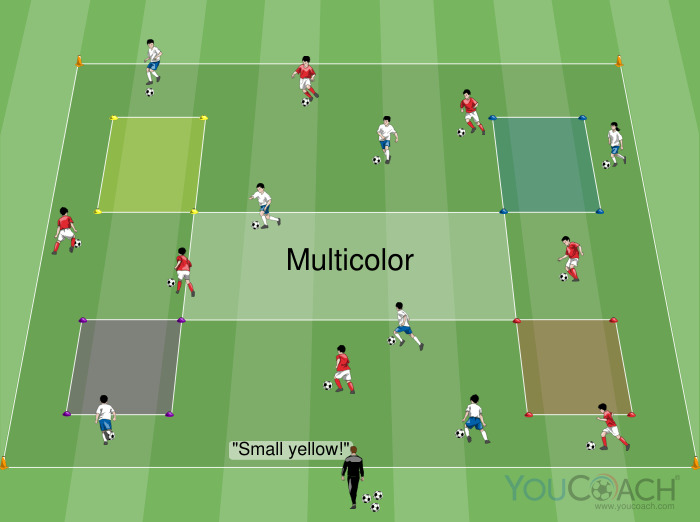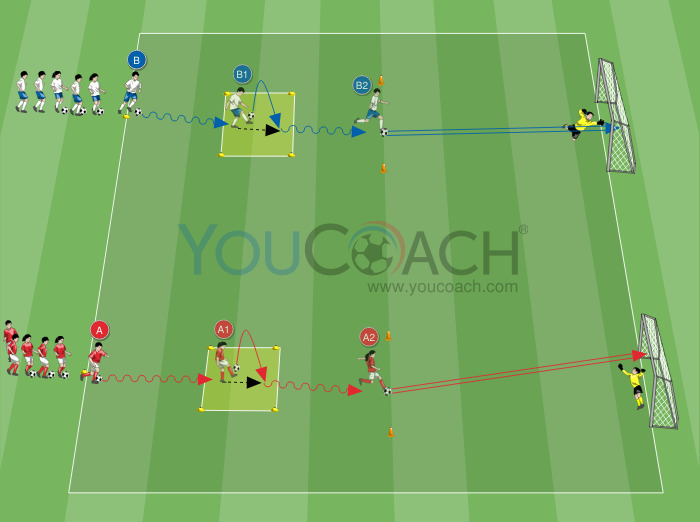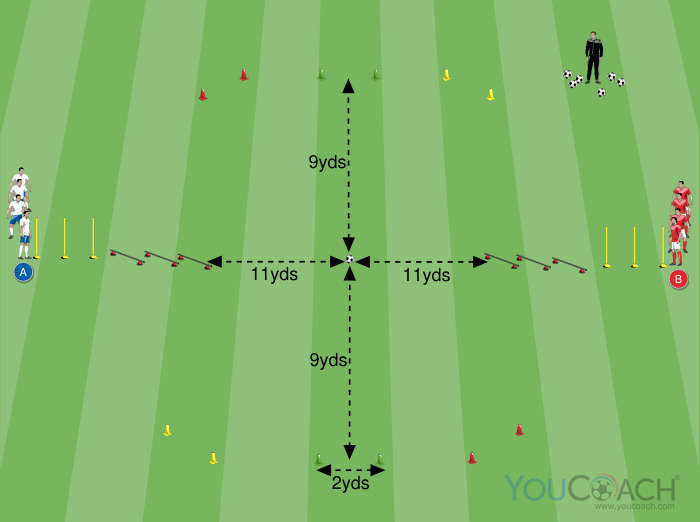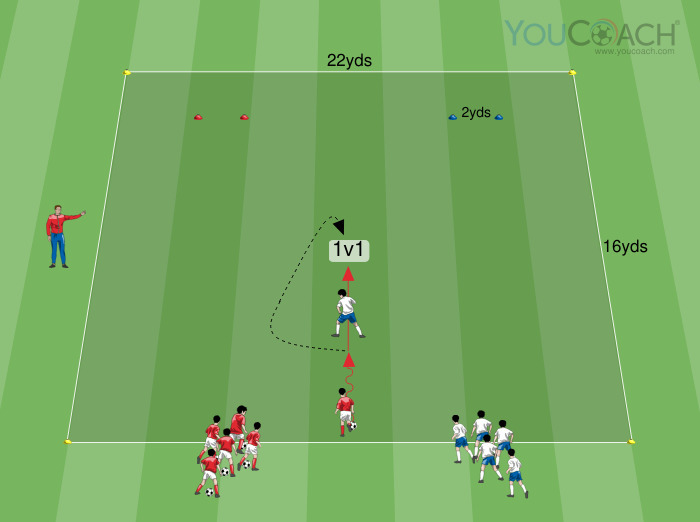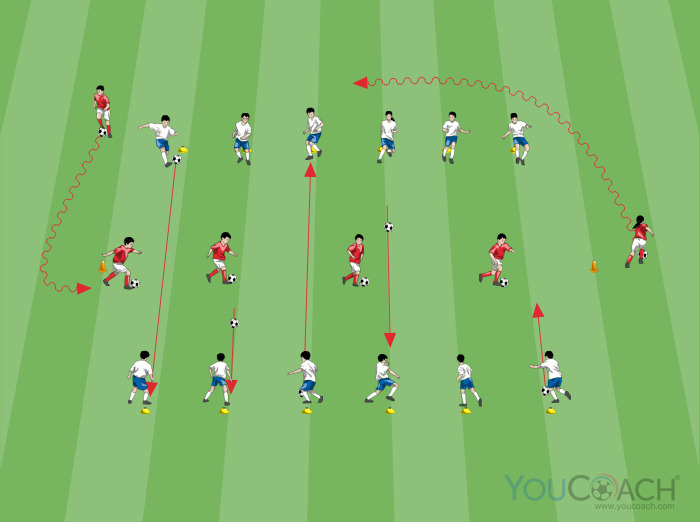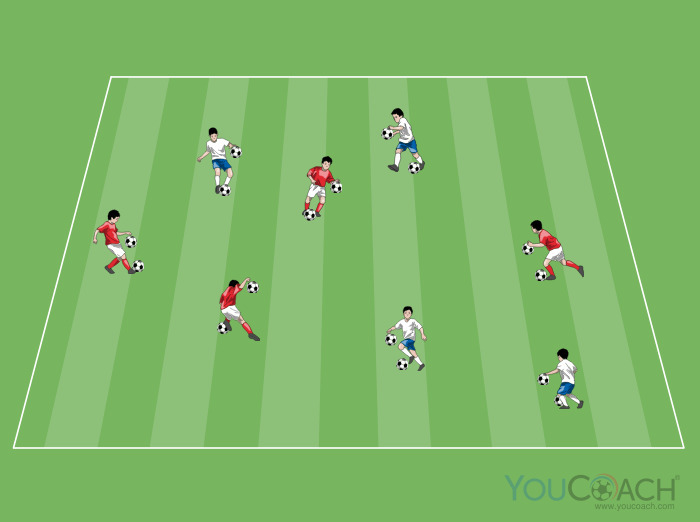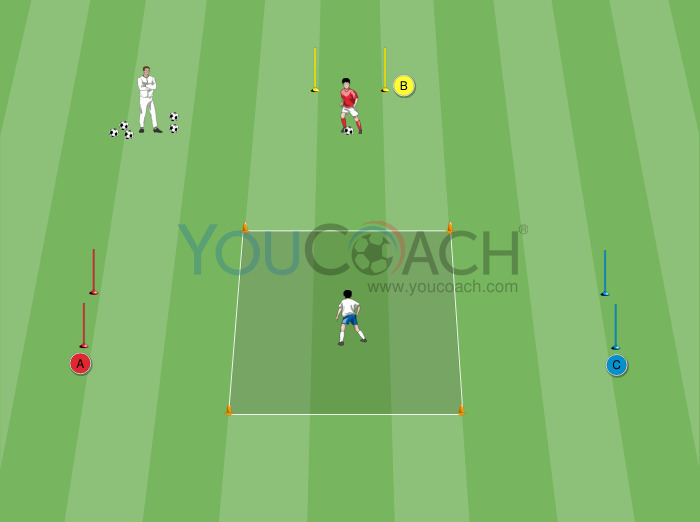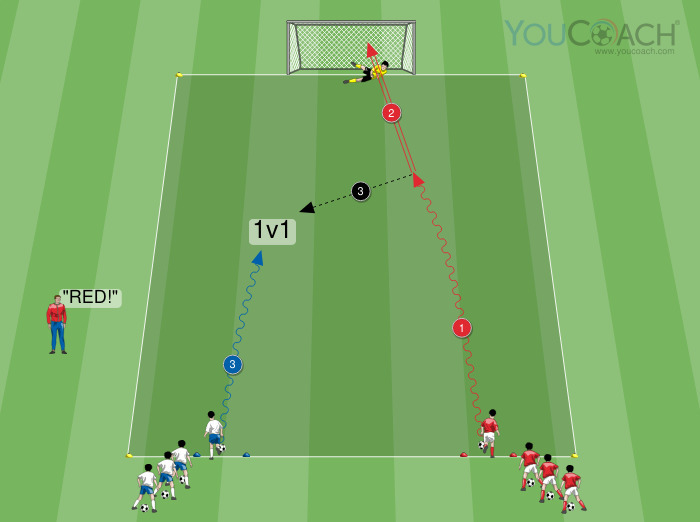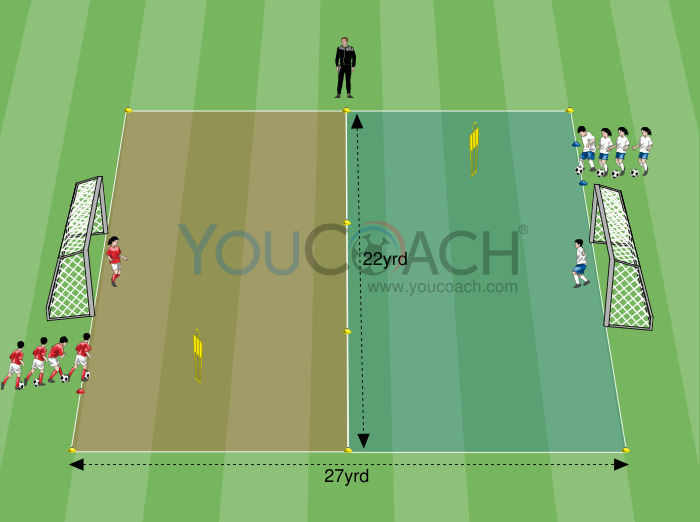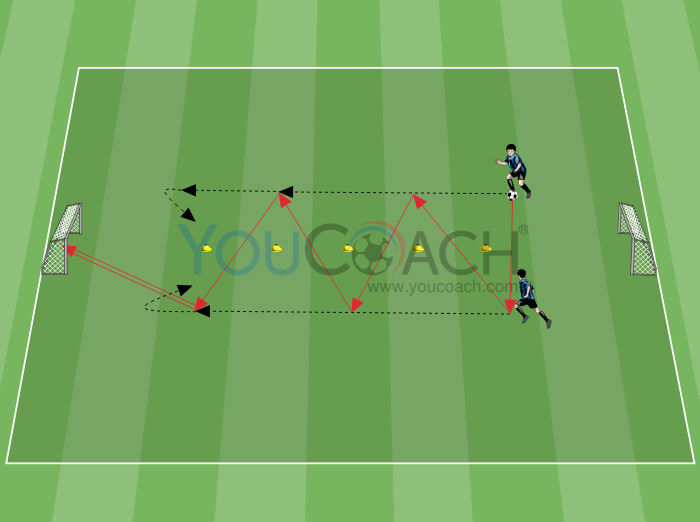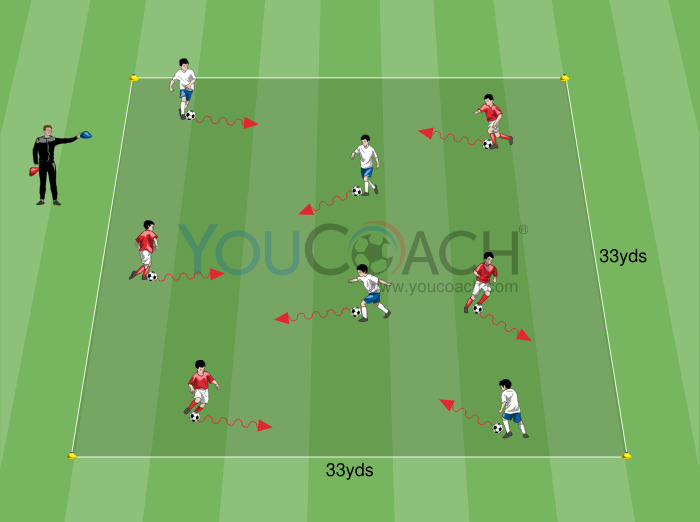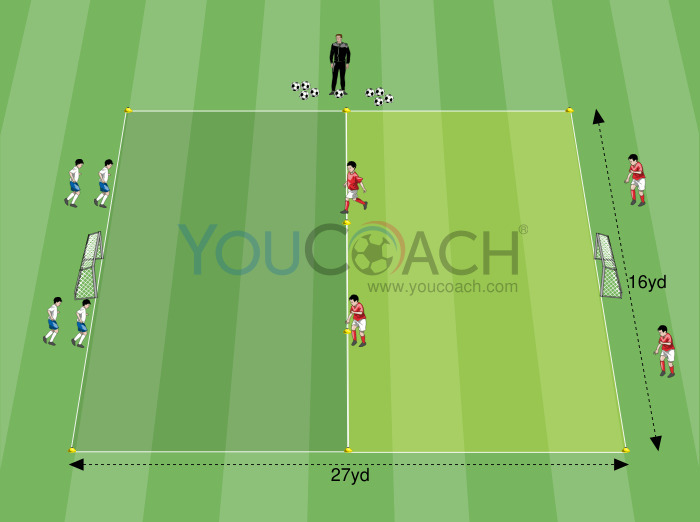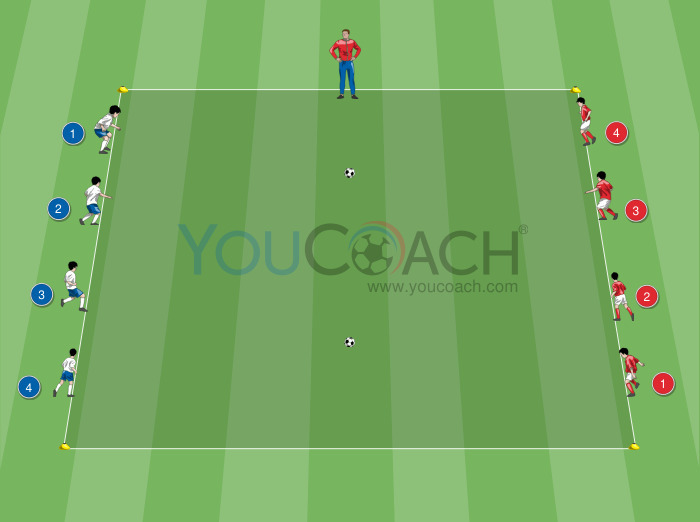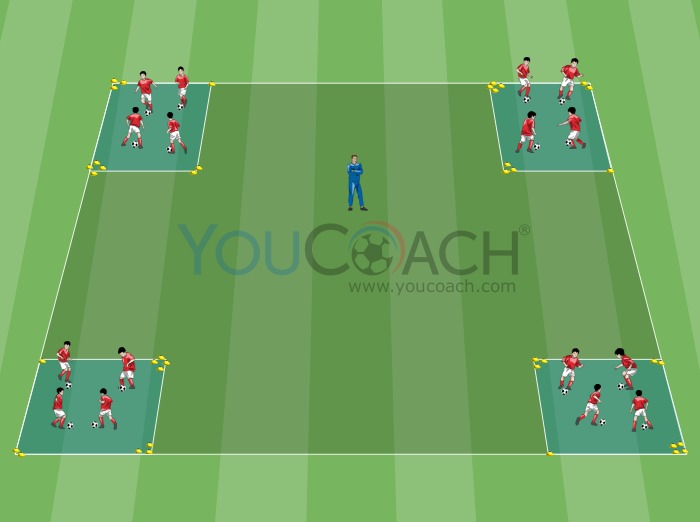Conditioned game: insertion
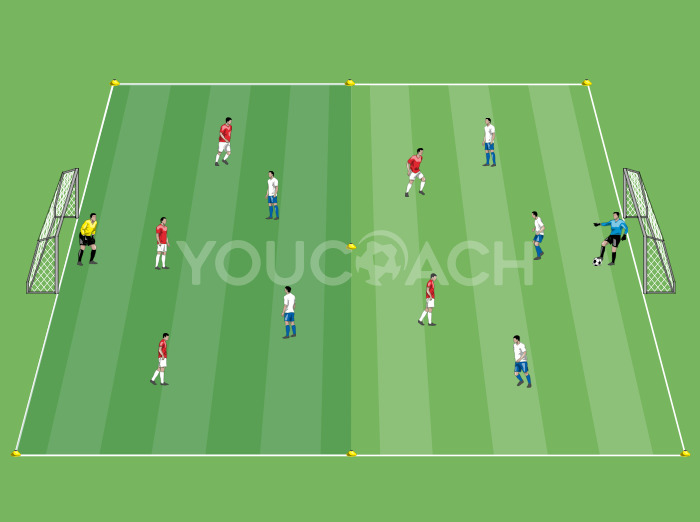
- 2 goals
- Balls
- 5 vests
- Markers
- Playing Area: 40x30 meters / 44x33 yds
- Players: 10 + 2 goalkeepers
- Duration: 18 minutes
- Series: 2 of 8 minutes each with 2 minutes of passive recovery in between
| Summary | Secondary Objectives |
|---|---|
|
Conditioned game to improve space and insertion time |
Transition, Mark, Pressing, 3v3, 4v2, Passing, Shooting, Intercepting, Pass, Losing your marker, Finishing, Positioning, Marking, Intercepting, Improvisation, Mobility, 3 versus 3, 4 versus 2, Direct play, Insertion, Pressure, Reading trajectories, Transitions |
Using the markers, create a playing field 40 meters/44 yards long and 30 meters/33 yards wide. Place a standard goal in the middle of both short sides of the field. Divide the players into two teams of five members each using vests (white versus red players in the picture). Divide the field into two equal-sized halves with markers (center dividing line). The five players from each team position themselves: three in the defensive half of the field and two in the offensive half. The two goalkeepers defend the goals. A 6 v 6 is played.
- The goalkeeper starts the game by passing the ball to a defender (mandatory in their own half of the field)
- Defenders make possession of the ball in their own half of the field, waiting for an attacker in the offensive half of the field to lose their marker in order to serve them (defenders then handle the ball in numerical superiority: 3 + goalkeeper vs 2 attackers)
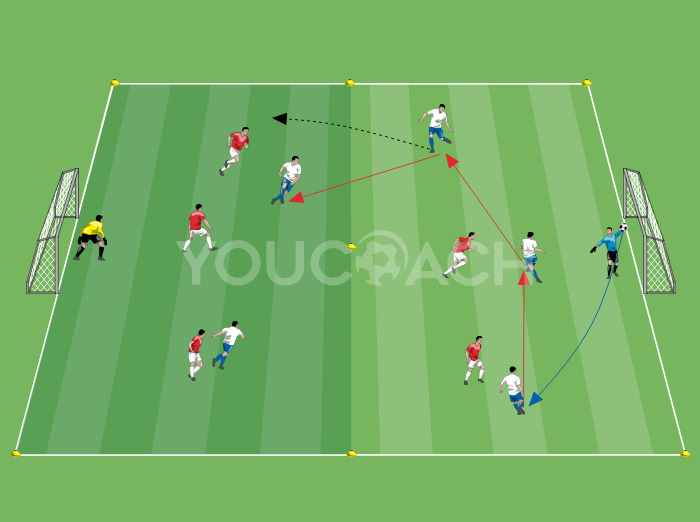
- The defender who performed the pass to the attacker in the offensive half must insert themselves in the attacking area creating a 3v3 situation for the goal
- The attacking team looks for a conclusion on goal
- When the action is over, the defender quickly returns to their own half of the field
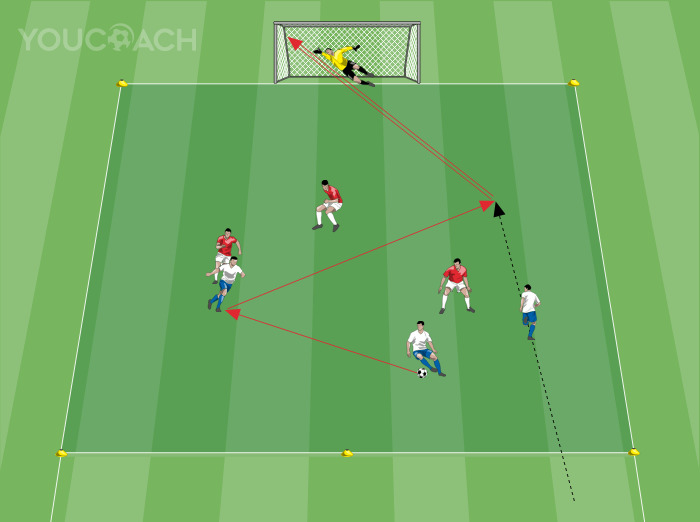
- Only the defender who made the pass can insert themselves into the attacking phase
- Players have a limited number of touches available (e.g., three), this is to speed up the passing of the ball and the development of the action
- If attackers steal the ball from defenders, during defensive management of possession, they can seek direct finalization (positive transition)
- Any of the three defenders may insert themselves into the offensive (opposing) half of the field, and not necessarily the one who passed the ball to the attackers
- Create triangles of possession
- Take care of the reaction to the negative transition
- Take care of the overall distances between players
- Care for the orientation of the body when receiving, it must always be open to the larger portion of the field
- Encourage the Give and Go: after playing the ball to a teammate, the player continues the run to insert into an open space where he can receive again in support
- Minimum ideal unit: The ball carrier must have, at his disposal, a minimum number of teammates who can guarantee a pass at any time
- The player closest to the ball carrier must choose what to do, consequently triggering the relative and opposite movement of teammates
- To trigger continuous mobility and maintain appropriate staggering, two neighboring players who are on the same line, whether horizontal or vertical to the field, should move by creating diagonal lines of play


